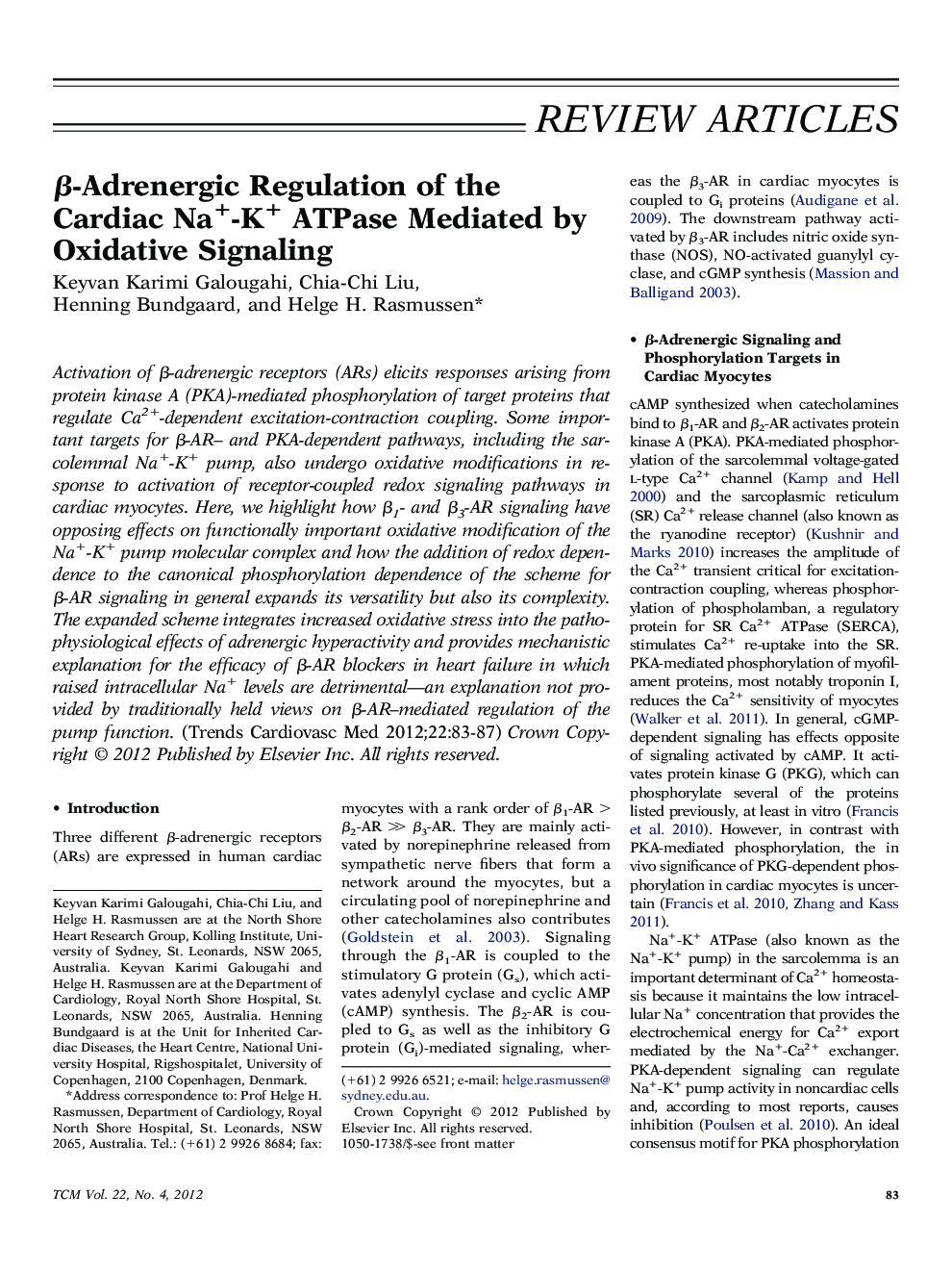| کد مقاله | کد نشریه | سال انتشار | مقاله انگلیسی | نسخه تمام متن |
|---|---|---|---|---|
| 3031392 | 1183866 | 2012 | 5 صفحه PDF | دانلود رایگان |

Activation of β-adrenergic receptors (ARs) elicits responses arising from protein kinase A (PKA)-mediated phosphorylation of target proteins that regulate Ca2+-dependent excitation-contraction coupling. Some important targets for β-AR– and PKA-dependent pathways, including the sarcolemmal Na+-K+ pump, also undergo oxidative modifications in response to activation of receptor-coupled redox signaling pathways in cardiac myocytes. Here, we highlight how β1- and β3-AR signaling have opposing effects on functionally important oxidative modification of the Na+-K+ pump molecular complex and how the addition of redox dependence to the canonical phosphorylation dependence of the scheme for β-AR signaling in general expands its versatility but also its complexity. The expanded scheme integrates increased oxidative stress into the pathophysiological effects of adrenergic hyperactivity and provides mechanistic explanation for the efficacy of β-AR blockers in heart failure in which raised intracellular Na+ levels are detrimental—an explanation not provided by traditionally held views on β-AR–mediated regulation of the pump function.
Journal: Trends in Cardiovascular Medicine - Volume 22, Issue 4, May 2012, Pages 83–87